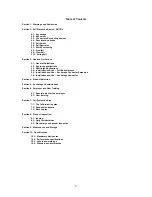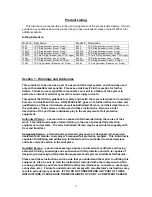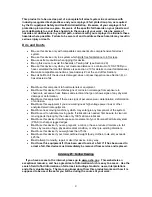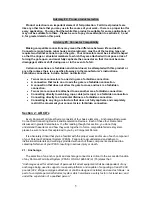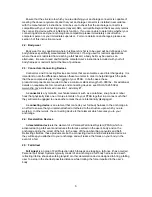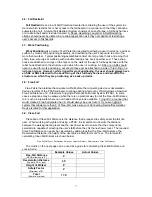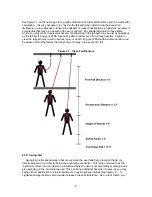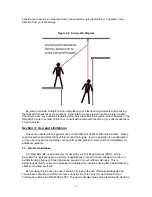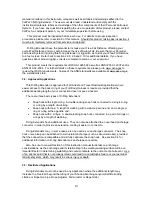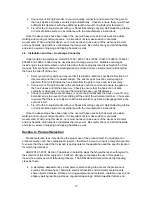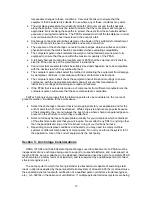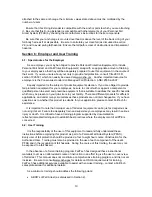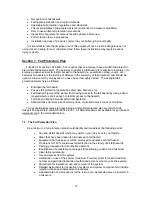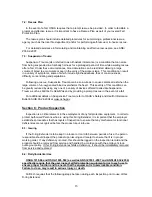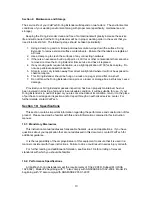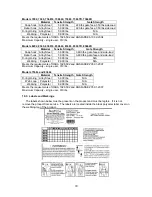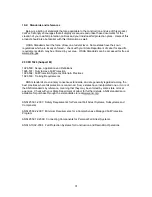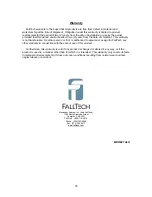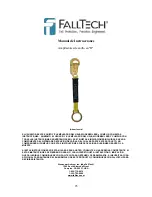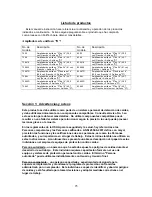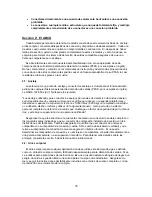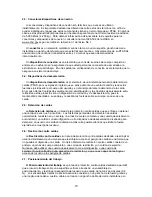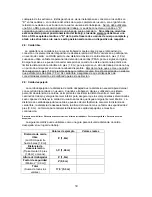
16
7.2: Rescue Plan
In the event of a fall, OSHA requires that a prompt rescue be provided. In order to facilitate a
prompt and effective rescue, it is important to have a Rescue Plan as part of your overall Fall
Protection Plan.
The rescue plan should include detailed procedures for summoning a professional rescue
agency (such as the local fire department) and/or for performing self-rescue or in-house rescue.
For detailed assistance in formulating and maintaining an effective rescue plan, see ANSI
Z359.2-2007.
7.3: Suspension Trauma
Suspension Trauma (also referred to as orthostatic intolerance) is a condition that can arise
from being suspended in a full-body harness for a prolonged period of time while awaiting rescue
after a fall. Under these circumstances, blood circulation can be restricted allowing a large
volume of blood to accumulate or pool in the veins of the workers legs. This condition can result
in a variety of symptoms, some of which include light-headedness, loss of consciousness,
difficulty concentrating and palpitations.
Following a rescue, Suspension Trauma can be so acute as to cause cardiac arrest when the
large volume of un-oxygenated blood overwhelms the heart. This severity of this condition can
be greatly reduced by using any one of a variety of devices offered to alleviate Suspension
Trauma, such as
FallTech’s ReliefPak
and by providing a prompt rescue in the event of a fall.
For additional details on Suspension Trauma, refer to OSHA’s Safety and Health Information
Bulletin SHIB 03-24-2004 at www.osha.gov.
Section 8: Product Inspection
Inspection is a critical element in the employment of any fall protection equipment. In order to
protect Authorized Persons who are using this D-ring Extender, it is important that the employer
establishes procedures that has layers of inspection to ensure that any mechanical or functional
deficiencies are recognized before the product is put into use.
8.1: Issuing
If the D-ring Extender is to be kept in a locker or tool crib between periods of use, the person
responsible should inspect the product upon issuing and receipt to ensure that it is in proper
working order. If any deficiency is noted, this should be logged on the inspection record and the
product should be removed from service and handled in accordance with the employer’s lock-
out/tag-out policy. If this D-ring Extender exhibits a deficiency, it should be immediately removed
from service and replaced.
8.2: Daily/Incidental Use
OSHA 1910.66 and OSHA 1926.502 (as well as ANSI Z359.1-2007 and ANSI A10.32-2004)
specifically require that the user inspect all fall protection equipment prior to each use to
ensure proper function and to ensure that the equipment is in serviceable condition.
Failure to do so may result in serious injury or death.
FallTech
requires that the following steps be taken during each inspection prior to use of this
D-ring Extender:

